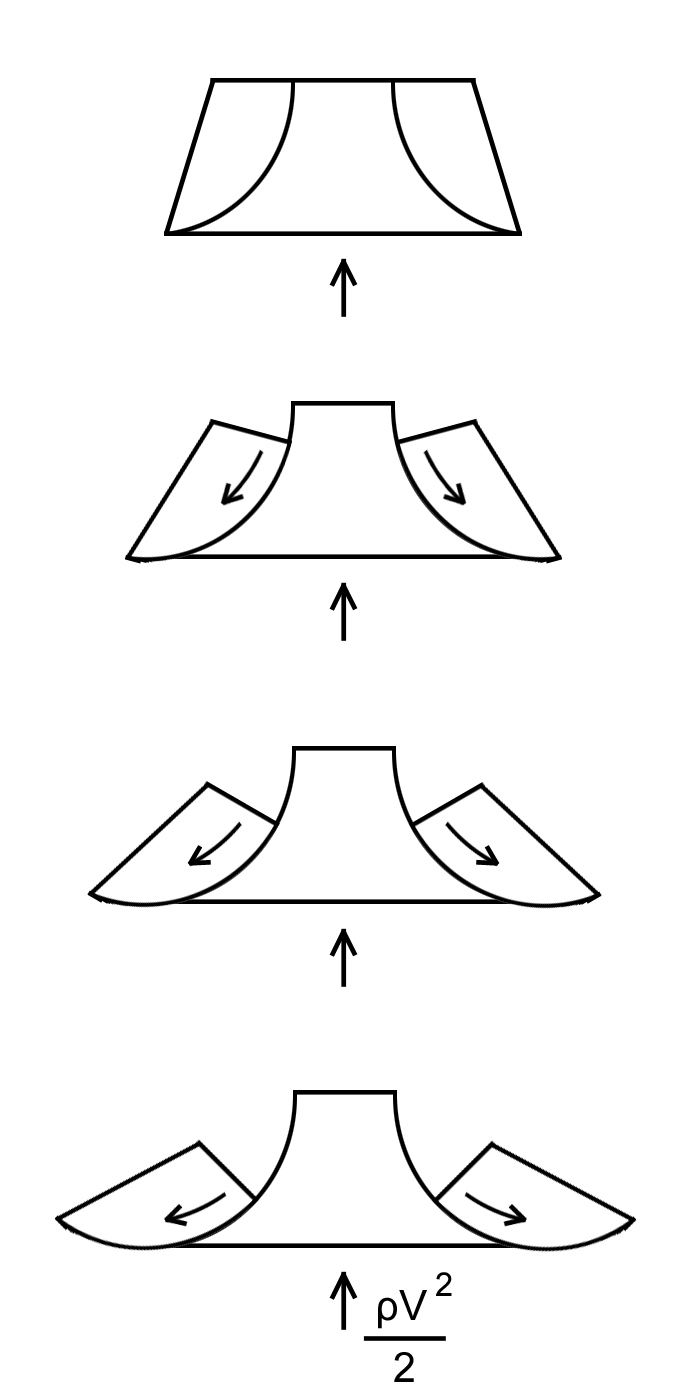In accordance to latest investigations of comets, nucleus of comet consist of considerably friable substance. We can compare this substance with large volume of friable soil. During penetration into dense atmosphere this volume of soil will be considerably deformed already at initial stage of interaction with air flow. The difficulty of correct modeling of this process is connected to simultaneous influence of different phenomena like friction and coupling between particles of comet soil. That is why, reliable and simple method of numerical estimation is necessary for mathematical modeling of comet nucleus deformation during entrance into atmosphere. It is useful to take into consideration Fellenius theory of soil stability, which allows to calculate processes like landslide. In accordance to this theory, the motion of soil along slope takes place on cylinder-like surfaces. The same landslides may take place during aerodynamic load of comet at the entrance into atmosphere (Fig.1).
Fig. 1. Scheme of landslides on comet nucleus along cylinder-like surfaces due to aerodynamic load (application of Fellenius theory of soil stability)
Powerful aerodynamic load is able to deform solid meteor bodies. For example, destruction and deformation of solid meteor bodies were analysed by S.S.Grigorian [S.S.Grigorian, 1976, 1979]. However, processes in friable substance (friable soil) of comet nucleus seems considerably unique. There is possible another mechanism of nucleus deformation in lateral direction, which connects to landslide phenomenon. This phenomenon seems more real during initial stage of entrance into atmosphere of friable comet nucleus. Also let’s notice that landslides may take place many times during motion of comet nucleus through atmosphere. Well-known Fellenius theory is very reliable and considerably suitable for simple estimations of landslide phenomena in friable substance of comet. The author tested Fellenius theory during quasi three-dimensional modeling of Tunguska comet impact and found this test successful [Zlobin, 2007]. It was shown that Tunguska meteorites probably were dissipated on considerable lateral distance [Zlobin, 2013].
References
- Fellenius, W. 1933, Statics of soils (translation P.C.Ruba), Statika gruntov [in Russian], Stroyizdat
- Grigorian, S.S. 1976, To the question about nature of Tunguska meteorite [in Russian], Dokl. AN SSSR, v. 231, No. 1, 57-60.
- Grigorian, S.S. 1979, About motion and destruction of meteorites in atmospheres of planets [in Russian], Space researches, v. 17, No. 6, 875-893.
- Zlobin, A.E. 2007, Quasi Three-dimensional Modeling of Tunguska Comet Impact (1908). Paper of 2007 Planetary Defense Conference held on March 5 – 8,
- 2007 at the Cloyd Heck Marvin Center, George Washington University, Washington, D.C.
- Zlobin, A.E. 2013, Discovery of probably Tunguska meteorites at the bottom of Khushmo River’s shoal; arXiv:1304.8070 [physics.gen-ph]
- Zlobin, A.E. 2013, Tunguska similar impacts and origin of life; arXiv:1402.1408 [physics.gen-ph]
Количество просмотров публикации: Please wait



